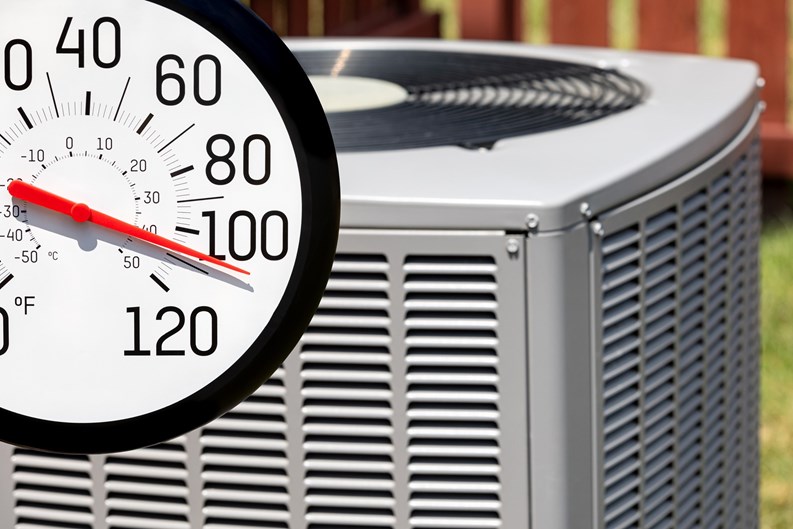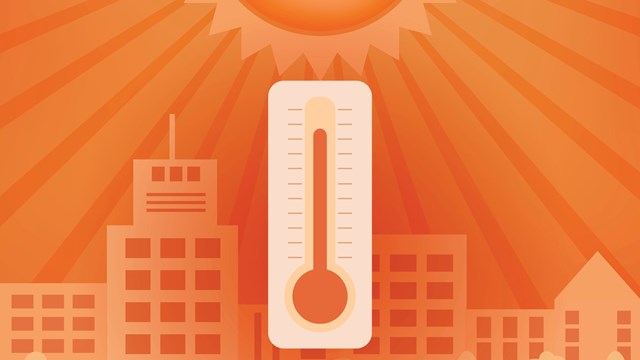The impacts of climate change are vast and interrelated. While natural factors like solar variations, the planet’s orbital shifts, and volcanic eruptions occur cyclically and have nothing to do with people, human activity adds significantly to greenhouse gas emissions. According to the United States Environmental Protection Agency (EPA), these influences have driven average winter temperatures across the United States up by almost three degrees since 1896, which may not seem like much, but over time has led to more frequent and severe weather events, like heat waves and flooding. Even more concerningly, these two events often overlap, causing even greater peril. The worry is particularly severe for communities built along our coasts and shores—including along the shore of Lake Michigan.
“The real impact in the Midwest has involved Lake Michigan,” says Phillip Mahan, owner and president of Bloomingdale, Illinois-based engineering firm Structural Technologies. In recent years, he says, “The lake’s water level has risen by two feet due to increased storm intensity and runoff. The result has been significant erosion of the shoreline, especially around Chicago and into Indiana and Michigan—whole sections of land are shearing off and falling into the lake. The trend and the damage are significant. In an effort to stave off the damage, pilings have been put in or reinforced. Seawalls—including gigantic stones to act as breakwalls to protect building foundations—have been built, but we do have potential building collapse problems.”
In Chicago’s case, Mahan explains, “[The city] is built on silt and backfill as far west as Michigan Avenue. The lake is already two feet higher, and that backfill is saturated. Lakeshore Drive is at risk. It’s an iconic address, and owners are very concerned about the stabilization of their footings because of the rising water table. The problem we face is destabilized soils. Building pilings are on bedrock, but the steel is exposed to water and can corrode. Corrosion of steel within pilings and rebar is the major issue.”
This warming trend also creates an increased demand on HVAC systems, driving up energy consumption as multifamily property owners prioritize energy efficiency, sustainability, and comfort to manage residents’ cooling demands.
Lee Hoffman, co-founder and president of Runwise, a smart building control company that services communities nationwide, says climate change and extreme weather patterns are impacting multifamily buildings in a variety of ways. “When the weather is mild, even older systems can continue to operate effectively. However, the shifting weather patterns we’re experiencing are placing a much greater demand on HVAC systems, which account for most of buildings’ energy consumption. Twenty years ago, the weather was more stable, but now it’s more common to see temperatures swing from 20 degrees in the morning to 60 degrees in the afternoon on a winter day.”
Climate Change & Increased Demand
“HVAC is typically the single biggest consumer of utilities in an apartment building, and often the area with the most energy waste,” says James Hannah, managing director of Parity, a remote HVAC optimization software company with a portfolio of client buildings in NYC. “We know from a return-on-investment standpoint that optimizing the performance of your existing systems, rather than replacing them, is right up there at the top of the list of the most cost-effective steps a building can take to reduce consumption. You can focus on not consuming more energy than you need to meet demand. In recent years, most buildings have converted their lighting to more efficient LEDs. Now they need to see what more we can do by focusing on HVAC and other parts of the building.”
According to Charlie Read, vice president of development at New York-based energy provider Energo, “Extreme heat events have certainly made cooling demands spike in buildings, and unfortunately it can be difficult for people to conserve energy. Window air conditioning units aren’t the most efficient, however, for some buildings, moving away from window AC units is too expensive and extensive of a project.”
However, he continues, “Something co-op and condominium boards can do is create different committees to help deal specifically with issues like energy efficiency. It is such a broad and multifaceted topic that having a committee who can more fully understand the landscape is something we’ve seen to be highly effective in helping boards make informed and timely decisions. That’s especially important now, when boards are having to navigate rising insurance costs, high interest rates, local laws, and other pressing matters.”
Optimization & Technology Integration
“The shift towards warmer winters and hotter summers necessitates the need for versatile strategies in HVAC systems for multifamily buildings and HOAs,” says Read. “From upgrading equipment and enhancing energy efficiency to adapting building designs, proactive measures are essential to alleviate the impacts on comfort, energy consumption, and operating costs.”
According to Mahan, regular inspections and evaluations of building systems are a key part of this. Among other things, these assessments should look for structural changes like new cracks in walls, or anything that’s moving or sagging. “The thing is that we are seeing this rising water table and heavier rains and melts,” he explains. “The footings are moving and there are big cracks appearing. We have to evaluate whether the building is at risk. Every potentially affected property needs ongoing evaluation, and must be prepared to address any issues immediately. If you wait 15 years it’s not recoverable—as was demonstrated through the tragedy at [Champlain Towers condo] in Surfside, Florida. Boards must be proactive. The most important step to take is regular monitoring of the physical plant and structure.”
“We are often approached by buildings whose existing heating systems are near the end of their useful life,“ says Read, “and when that happens, we talk internally to see if it’s practical to explore electrification to…meet the city’s emissions targets. When discussing building electrification, we also need to consider how the city and state can generate renewable energy, and make sure the grid is ready for an increased demand across the board.”
“Technology gives buildings the ability to make fixes before issues become catastrophic,” says Hoffman, while also noting the growing need for systems to go online and integrate tools like smart controls and automated sensors, “It used to be that to control the building, you had to go down to the basement—but after the pandemic, we saw a shift to combatting the disruption of weather events like hurricanes and snowstorms by controlling the building remotely. By utilizing technology, building operations can be monitored over the internet. We have tools that allow us to adapt in real time.”
Resident Comfort & Energy Efficiency
“Tenant comfort also goes hand in hand with energy efficiency,“ says Read, ”It is well worth looking at what residents can do to improve performance. We look at creative solutions to keep buildings on track with improving sustainability, rather than a complete overhaul. We’re seeing these conversations becoming more frequent. Most building owners are already talking about LL97, so when you go into these discussions there isn’t as much of a learning curve as there was in the past. We know what’s coming up, and what we need to take into consideration. The goal is to make buildings as efficient as possible. Everyone can get on board with saving money and making capital improvements.”
Government regulations can feel overwhelming to boards and their management companies, but Hannah says it also creates opportunities for buildings to reduce costs and enhance tenant comfort. He says that “Being open minded to available technology solutions is smart. Dynamic HVAC control is a great application for automation. We use it to make small adjustments to the different systems in real-time to deliver savings, revenue and allow the resident managers to spend less time making manual adjustments.”
Regarding climate guidelines and regulations, Hoffman adds, “There are variations of guidelines in almost all major cities now to incentivize people to have these types of conversations. What was once unfamiliar territory is a more common topic of discussion. Climate change is on everyone’s radar.”
And the reality is that the situation is likely to get worse before it gets better. Years of inaction and over-politicization of the issue have given human industry the upper hand when it comes to impact on the planet.
“We don’t know how fast it will worsen,” says Mahan. “Lake levels are expected to continue to rise. In the past we built with no ability to control runoff into lakes. Within 10 years, we may have a major catastrophe on our hands. Mitigation should have started a decade ago. We always had a lake effect on our weather, but now those numbers are bigger, and we’re getting storms and tornadoes like we have never seen before. What we need to do immediately is reduce our carbon footprint, which is causing a microclimate within the city. We need green roofs and solar-reflecting ‘white roof’ systems to reduce heat gain. Another big factor is the increase in glass buildings that don’t absorb heat but rather reflect the solar radiation back into the surrounding microclimate, negating other mitigation efforts. That reflective heat melted a car in California—and too many glass façades are reflecting heat back and forth and driving the heat index up in Chicago as well.”
As weather patterns continue to grow more erratic, the need for better efficiency and more dynamic indoor environmental systems becomes critical to ensure both residents’ comfort and operational efficiency, and highlights the importance of optimizing existing building systems, integrating advanced technologies, and adhering to regulatory standards. By encouraging proactive conversations and embracing innovative approaches, property owners, managers, and HOAs can skillfully navigate the challenges posed by climate change.
Kate Mattiace is the Associate Editor of CooperatorNews Chicagoland.







Leave a Comment